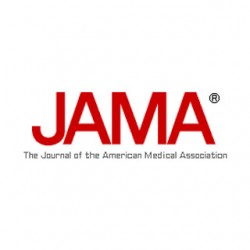You are looking at an archived version of our site. Please visit thepcc.org for a fresh, new experience!
You are here: Array » Changes in Self-report ...
Changes in Self-reported Insurance Coverage, Access to Care, and Health Under the Affordable Care Act

Abstract
Importance
The Affordable Care Act (ACA) completed its second open enrollment period in February 2015. Assessing the law’s effects has major policy implications.
Objectives
To estimate national changes in self-reported coverage, access to care, and health during the ACA’s first 2 open enrollment periods and to assess differences between low-income adults in states that expanded Medicaid and in states that did not expand Medicaid.
Design, Setting, and Participants
Analysis of the 2012-2015 Gallup-Healthways Well-Being Index, a daily national telephone survey. Using multivariable regression to adjust for pre-ACA trends and sociodemographics, we examined changes in outcomes for the nonelderly US adult population aged 18 through 64 years (n = 507 055) since the first open enrollment period began in October 2013. Linear regressions were used to model each outcome as a function of a linear monthly time trend and quarterly indicators. Then, pre-ACA (January 2012-September 2013) and post-ACA (January 2014-March 2015) changes for adults with incomes below 138% of the poverty level in Medicaid expansion states (n = 48 905 among 28 states and Washington, DC) vs nonexpansion states (n = 37 283 among 22 states) were compared using a differences-in-differences approach.
Exposures
Beginning of the ACA’s first open enrollment period (October 2013).
Main Outcomes and Measures
Self-reported rates of being uninsured, lacking a personal physician, lacking easy access to medicine, inability to afford needed care, overall health status, and health-related activity limitations.
Results
Among the 507 055 adults in this survey, pre-ACA trends were significantly worsening for all outcomes. Compared with the pre-ACA trends, by the first quarter of 2015, the adjusted proportions who were uninsured decreased by 7.9 percentage points (95% CI, −9.1 to −6.7); who lacked a personal physician, −3.5 percentage points (95% CI, −4.8 to −2.2); who lacked easy access to medicine, −2.4 percentage points (95% CI, −3.3 to −1.5); who were unable to afford care, −5.5 percentage points (95% CI, −6.7 to −4.2); who reported fair/poor health, −3.4 percentage points (95% CI, −4.6 to −2.2); and the percentage of days with activities limited by health, −1.7 percentage points (95% CI, −2.4 to −0.9). Coverage changes were largest among minorities; for example, the decrease in the uninsured rate was larger among Latino adults (−11.9 percentage points [95% CI, −15.3 to −8.5]) than white adults (−6.1 percentage points [95% CI, −7.3 to −4.8]). Medicaid expansion was associated with significant reductions among low-income adults in the uninsured rate (differences-in-differences estimate, −5.2 percentage points [95% CI, −7.9 to −2.6]), lacking a personal physician (−1.8 percentage points [95% CI, −3.4 to −0.3]), and difficulty accessing medicine (−2.2 percentage points [95% CI, −3.8 to −0.7]).
Conclusions and Relevance
The ACA’s first 2 open enrollment periods were associated with significantly improved trends in self-reported coverage, access to primary care and medications, affordability, and health. Low-income adults in states that expanded Medicaid reported significant gains in insurance coverage and access compared with adults in states that did not expand Medicaid.
Full Resource/Source: JAMA Internal Medicine
Secondary menu
Copyright © 2024 Primary Care Collaborative



